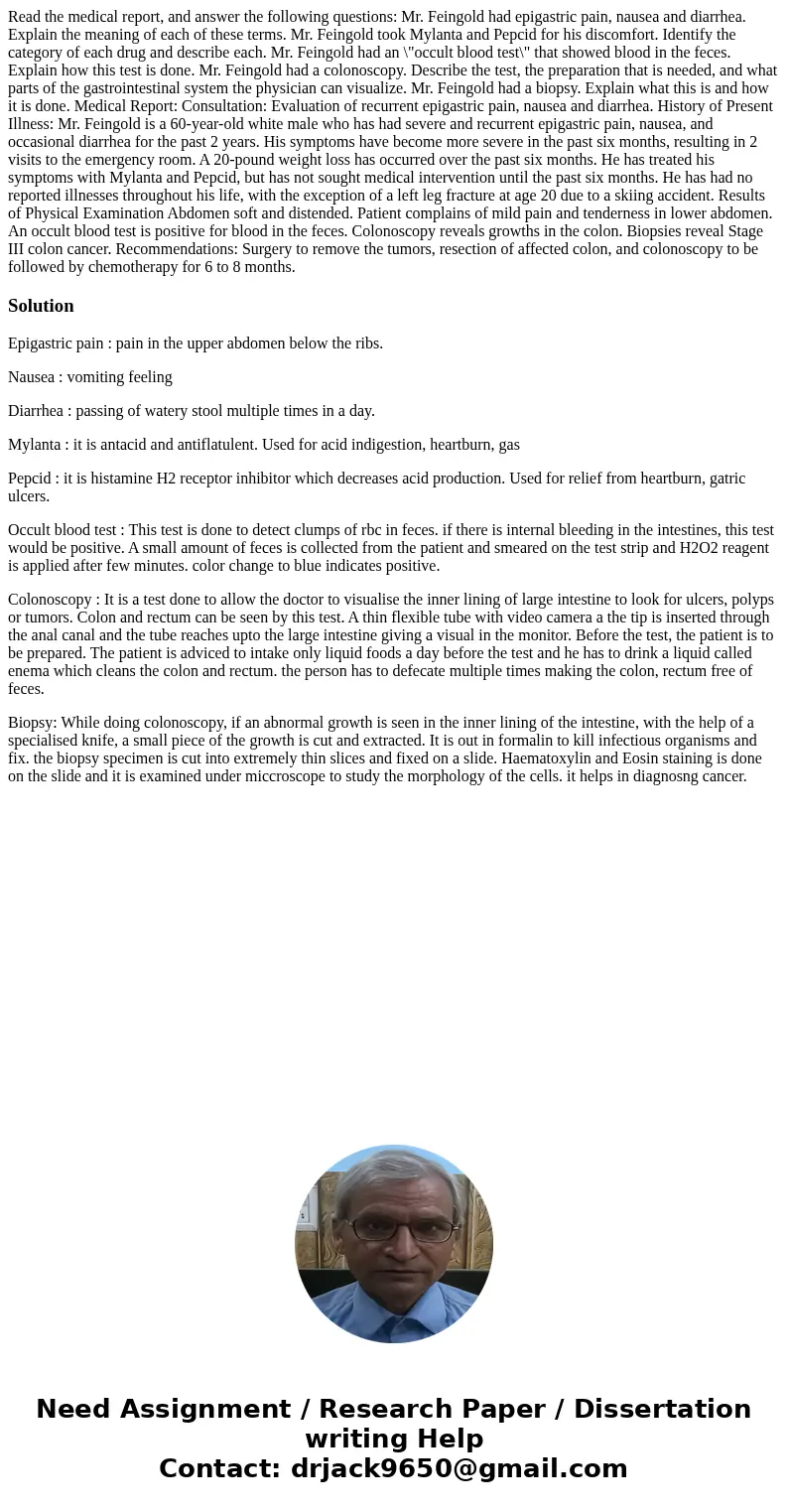Read the medical report and answer the following questions M
Solution
Epigastric pain : pain in the upper abdomen below the ribs.
Nausea : vomiting feeling
Diarrhea : passing of watery stool multiple times in a day.
Mylanta : it is antacid and antiflatulent. Used for acid indigestion, heartburn, gas
Pepcid : it is histamine H2 receptor inhibitor which decreases acid production. Used for relief from heartburn, gatric ulcers.
Occult blood test : This test is done to detect clumps of rbc in feces. if there is internal bleeding in the intestines, this test would be positive. A small amount of feces is collected from the patient and smeared on the test strip and H2O2 reagent is applied after few minutes. color change to blue indicates positive.
Colonoscopy : It is a test done to allow the doctor to visualise the inner lining of large intestine to look for ulcers, polyps or tumors. Colon and rectum can be seen by this test. A thin flexible tube with video camera a the tip is inserted through the anal canal and the tube reaches upto the large intestine giving a visual in the monitor. Before the test, the patient is to be prepared. The patient is adviced to intake only liquid foods a day before the test and he has to drink a liquid called enema which cleans the colon and rectum. the person has to defecate multiple times making the colon, rectum free of feces.
Biopsy: While doing colonoscopy, if an abnormal growth is seen in the inner lining of the intestine, with the help of a specialised knife, a small piece of the growth is cut and extracted. It is out in formalin to kill infectious organisms and fix. the biopsy specimen is cut into extremely thin slices and fixed on a slide. Haematoxylin and Eosin staining is done on the slide and it is examined under miccroscope to study the morphology of the cells. it helps in diagnosng cancer.

 Homework Sourse
Homework Sourse